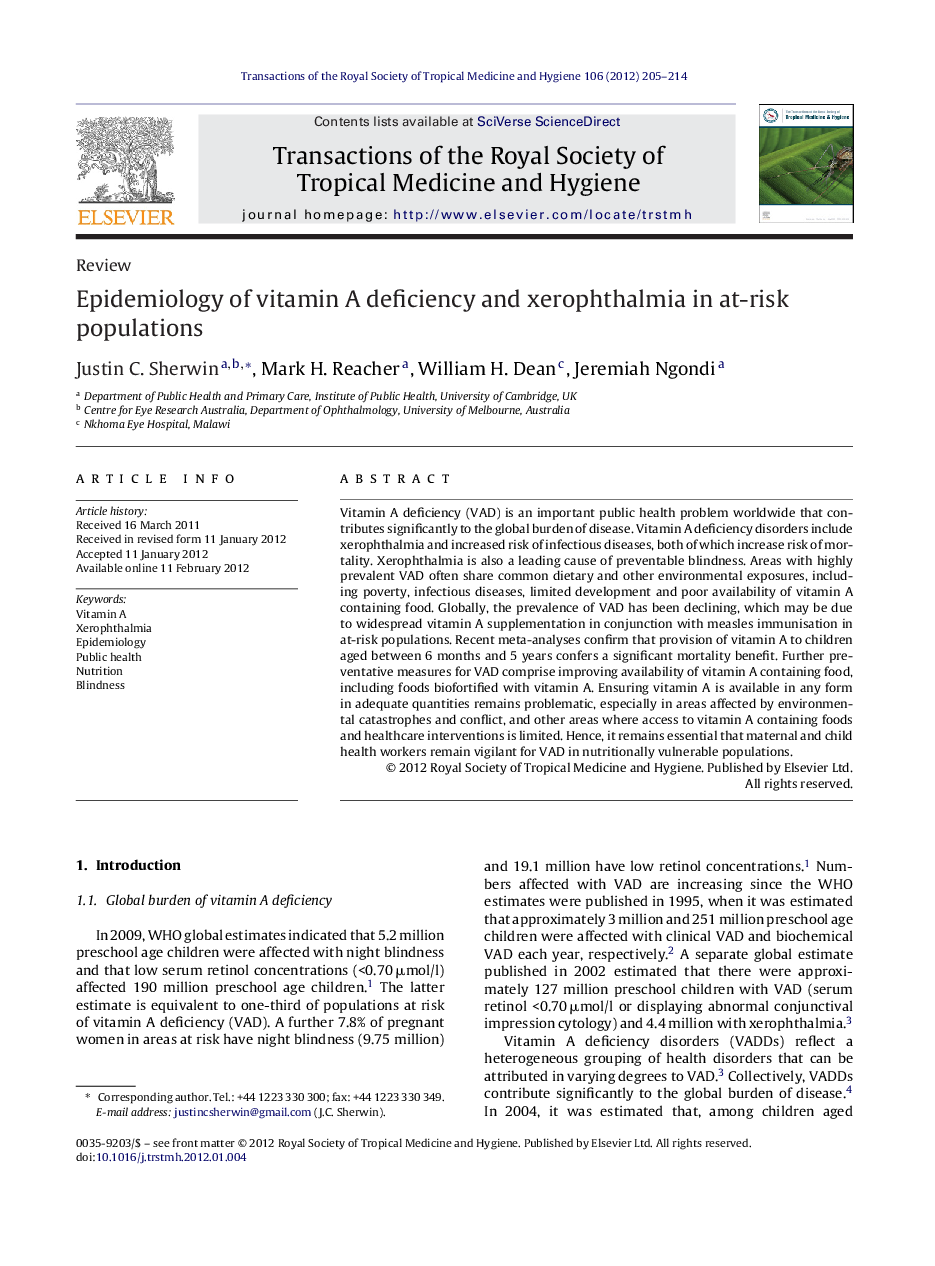| Article ID | Journal | Published Year | Pages | File Type |
|---|---|---|---|---|
| 3420447 | Transactions of the Royal Society of Tropical Medicine and Hygiene | 2012 | 10 Pages |
SummaryVitamin A deficiency (VAD) is an important public health problem worldwide that contributes significantly to the global burden of disease. Vitamin A deficiency disorders include xerophthalmia and increased risk of infectious diseases, both of which increase risk of mortality. Xerophthalmia is also a leading cause of preventable blindness. Areas with highly prevalent VAD often share common dietary and other environmental exposures, including poverty, infectious diseases, limited development and poor availability of vitamin A containing food. Globally, the prevalence of VAD has been declining, which may be due to widespread vitamin A supplementation in conjunction with measles immunisation in at-risk populations. Recent meta-analyses confirm that provision of vitamin A to children aged between 6 months and 5 years confers a significant mortality benefit. Further preventative measures for VAD comprise improving availability of vitamin A containing food, including foods biofortified with vitamin A. Ensuring vitamin A is available in any form in adequate quantities remains problematic, especially in areas affected by environmental catastrophes and conflict, and other areas where access to vitamin A containing foods and healthcare interventions is limited. Hence, it remains essential that maternal and child health workers remain vigilant for VAD in nutritionally vulnerable populations.
